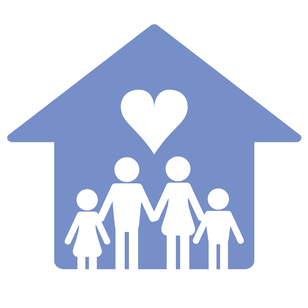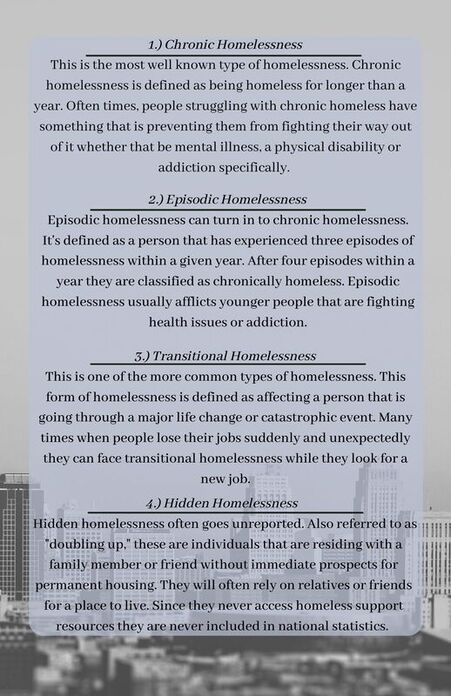|
By Kimberly King Homelessness is a complicated issue our society is plagued by. A result of a system-wide problem that has been perpetuated for decades, it has been a challenge to envision a society where homelessness can be eradicated. Strides towards this possibility are hindered by stigma, stereotypes and myths associated with homelessness. In addition, the common causes, intersections and experiences of individuals facing homelessness are often overlooked. Although there have been steps taken to tackle this issue, such as the improvements to rapid rehousing programs, there is still work to be done. When taking a look at homeless assistance efforts, although progress has been made to address single adults and veterans experiencing homelessness, there seems to be a blind spot for an underserved group to receive benefits. Children and families are both undercounted and inadequately supported from reaping the benefits of homeless assistance services across the United States. A 2020 study by Barbara Duffield looks at reimagining how children and families can benefit from homeless assistance services. This study piqued my interest in learning how our society can re-envision the future of homelessness assistance services for youth and families. Let’s first examine the four types of homelessness: Source: Art from the Streets “The Types of Homelessness” (own graphic) Out of the four types of homelessness, hidden homelessness greatly affects children and families. According to a data profile by SchoolHouse Connection and Poverty Solutions at the University of Michigan, during the 2020-2021 school year in Illinois, over 36,000 students experienced homelessness. Out of those over 36,000 students, the data profile indicates that 87% of these students were living “doubled up”, 7.5% were living in shelters and 4.7% lived in a hotel/motel. This data, coupled with the understanding of hidden homelessness, is affected by how homelessness is defined on a federal level.
According to the Department of Housing and Urban Development (HUD), which oversees national policy and programs related to housing needs and fair housing laws, homeless is defined as an individual:
Additionally, the reactionary system of current assistance services such as the Emergency Response System lacks connecting resources for people experiencing homelessness. For instance, transportation, job stability, childcare, and consistent affordable housing are not always factored into rehousing programs (2020). If these factors are not accounted for, it can place an individual or a family in a position of experiencing a cycle of homelessness. Coupled with the societal challenges of structural racism and discrimination, the solutions that are currently in place to address the issue of homelessness only provide selective, short-term solutions to a long-term need. So, how can homeless assistance services be re-envisioned in order to include children and families? The biggest barrier to accessible assistance services for all is the federal definition of homelessness. Nonprofit organizations like Chicago Coalition for the Homeless and Schoolhouse Connection are leading this initiative by petitioning for the Homeless Children and Youth Act of 2021(HYCA). This act is advocating for children and families by urging the HUD to align their definition of homelessness with nine other federal agencies and programs. This will recognize all forms of homelessness, specifically hidden homelessness, in order to create a well-rounded understanding and allow for an accurate count of all forms of homelessness experienced in America. Thus, expanding assistance services to be accessible by children and families. You can learn more about the HYCA and ways you can get involved here. Luckily, there are programs already leading the change. For instance, the Department of Education is utilizing the public education system to support families experiencing homelessness through the McKinney Vento Act of 1987. This act serves as a federal law that provides support and resources for students experiencing homelessness to overcome any barriers they may face in order to succeed in school. As previously mentioned, one of these barriers to accessing resources is the very definition of homelessness itself. Under the McKinney Vento Act, their definition of homelessness recognizes all forms of housing insecurity, including families living ‘doubled-up’ and within transitional housing. Through this definition of homelessness, it encompasses all individuals and circumstances, particularly children and families. In its entirety, it contains nine titles that individually address homelessness from different sectors including healthcare, housing and city ordinances. In Chicago, the McKinney-Vento Act is enacted through the Students in Temporary Living Situations (STLS) program with Chicago Public Schools. Families that meet the requirements according to the Act’s definition are eligible to enroll into the STLS program and have access to rights to support their educational journey including transportation to and from school, waived school fees, immediate enrollment despite lack of documentation and more. Chicago HOPES for Kids prides themselves on providing resources to families and educating them on their educational rights through the STLS program. Trying to imagine a society where everyone has access to resources to achieve both housing and economic security can be difficult. Children and families are both undercounted and inadequately supported from reaping the benefits of homeless assistance services across the United States. However, a future of stable housing and adequate living situations for all is possible. Re-envisioning a future of homelessness assistance services that includes children and families requires humanizing the experience of homelessness, reshaping the current responses to acknowledge all four types of homelessness and supporting organizations and agencies that are leading the change. References:
1 Comment
12/20/2021 05:45:07 pm
Thanks for pointing out that homelessness is a complicated issue our society is plagued by. My husband and I know how it feels to be homeless so we want to help even in our small way. With this, we will look for a nonprofit housing assistance donation campaign on Monday so we can provide cash donations through PayPal for low and middle-income individuals.
Reply
Leave a Reply. |
BLogArchives
July 2024
Categories |
Website by Gumbo Media



 RSS Feed
RSS Feed
